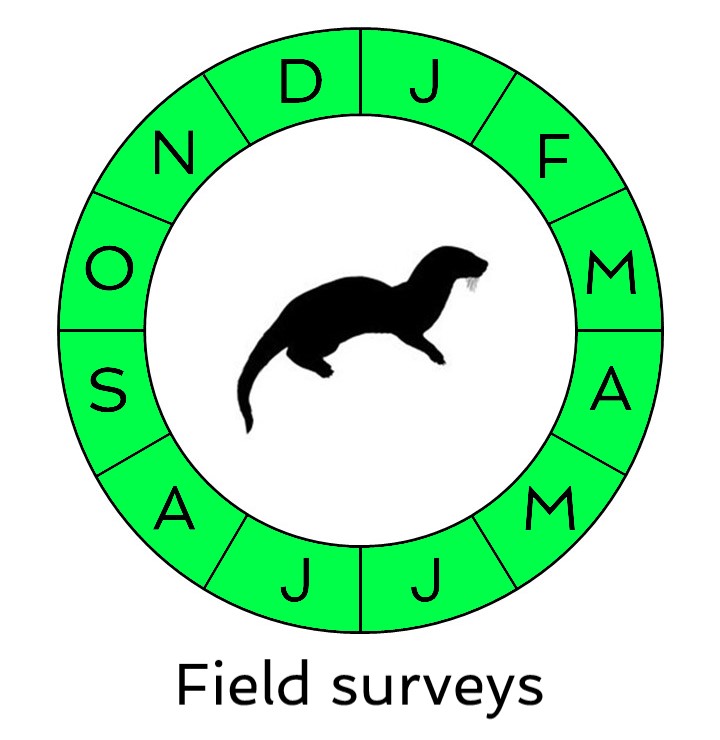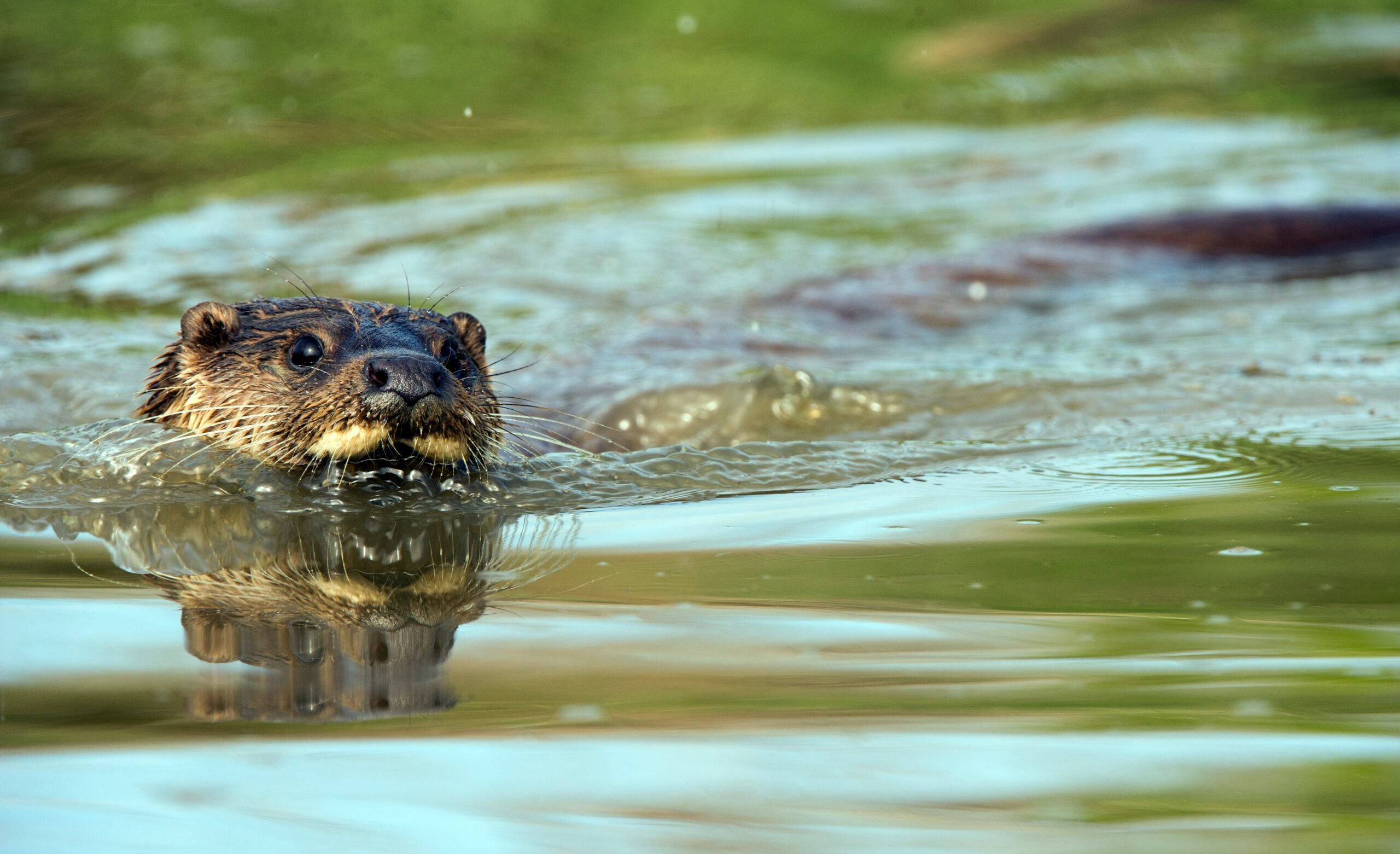The European otter Lutra lutra is the only native UK otter species, is a European Protected Species and is fully protected under Schedule 5 of the Wildlife and Countryside Act 1981 (as amended).

Otters are nocturnal animals and actual sightings are rare, but any construction project near a body of water could affect their lives. The law makes it illegal to:
- Capture, kill, disturb or injure otters (on purpose or by not taking enough care)
- Damage or destroy a breeding or resting place (deliberately or by not taking enough care)
- Obstruct access to their resting or sheltering places (deliberately or by not taking enough care)
- Possess, sell, control or transport live or dead otters, or parts of otters
If distribution and historical records suggest an otter may be present on your site, or works will affect a water body or habitats near or directly through a water body, then surveys may be required.
What does an otter survey entail?
Otters are elusive and largely nocturnal and males can hold a river territory of up to 35km long, so actual sightings are rare; therefore, surveys concentrate on evidence of otter presence, such as:
- Dung (spraints)
- Tracks (footprints)
- Feeding remains
- Slides (into water)
- Holts (underground dens)
- Couches (above ground sites where otters rest during the day)
Surveys can be undertaken at any time of year, but the best time is spring when evidence is often easier to find as water levels recede and wet mud is exposed allowing, for example, paw prints to be seen more easily.
You might not need to do detailed survey work if avoidance and mitigation measures are built into development proposals, but you must provide enough information to allow an LPA to understand what kinds of impacts there might be on otters and how these impacts might affect local otter populations.
Potential developmental impacts to consider include:
- Habitat loss or degradation in or near water bodies
- Habitats being cut off and becoming fragmented
- Holts and resting places being removed
- Disturbance to resting and feeding places
- Disturbing their usual routes (e.g. road bridge or culvert works) forcing otters to use roads or bridges that might mean it’s more likely that otters will be killed or injured on the road
- Changes to water quality which could also affect food sources.
Mitigation, Avoidance and Compensation
Such impacts can usually be averted through mitigation and avoidance measures, including:
Mitigation:
- Retain otter habitats in the water body and bank
- Avoid road crossings and culverts
- Use otter-proof fences to stop otters getting into development sites
Avoidance:
- Avoiding work on or near the water body and known otter habitat
- Avoiding disturbance effects (e.g. by leaving a buffer zone along a river)
- Avoiding night works
Compensation measures can be used to offset any remaining negative impacts for otters, including:
- Constructing artificial holts to replace those that will be damaged or removed
- Building viaducts or underpasses to allow otters to cross barriers like roads
- Installing mammal ledges on bridges and culverts to allow for continued passage alongside water bodies
- Restoring or improving habitats to compensate for those that will be lost
Usually you should be able to avoid harming otters or damaging or blocking access to their habitats. If you can’t, and once you have planning permission, we can apply for a mitigation licence on your behalf.

When is the right time to carry out an otter survey?
Field surveys can be undertaken at any time of year.
Green = optimal | Yellow = suboptimal | White = unsuitable
How can Ecology Resources help?
We offer free advice regarding all otter survey matters, including how your project may be affected by their presence, or how you can tweak you project design to ensure a biodiversity net gain is achieved. To discuss further, feel free to ring us during office hours or email us at anytime.
A few examples of otter projects we have successfully delivered for our clients

Shropshire

Cambridgeshire

West Midlands

